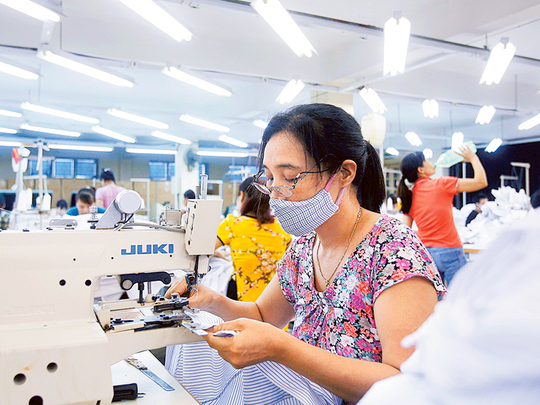
Atlanta: The United States and 11 other Pacific Rim nations on Monday agreed to the largest regional trade accord in history, a potentially precedent-setting model for global commerce and worker standards that would tie together 40 per cent of the world’s economy, from Canada and Chile to Japan and Australia.
The Trans-Pacific Partnership still faces months of debate in the US Congress and will inject a new flash point into both parties’ presidential contests.
But the accord — a product of nearly eight years of negotiations, including five days of round-the-clock sessions here — is a potentially legacy-making achievement for President Barack Obama, and the capstone for his foreign policy “pivot” toward closer relations with fast-growing eastern Asia, after years of US preoccupation with the Middle East and North Africa.
Obama spent recent days contacting world leaders to seal the deal. Administration officials have repeatedly pressed their contention that the partnership would build a bulwark against China’s economic influence, and allow the United States and its allies — not Beijing — to set the standards for Pacific commerce.
The Pacific accord would phase out thousands of import tariffs as well as other barriers to international trade. It also would establish uniform rules on corporations’ intellectual property, open the internet even in communist Vietnam and crack down on wildlife trafficking and environmental abuses.
Several potentially deal-breaking disputes kept the ministers talking through the weekend and forced them repeatedly to reschedule the promised Sunday announcement of the deal into the evening and beyond. Final compromises covered commercial protections for drugmakers’ advanced medicines, more open markets for dairy products and sugar, and a slow phaseout — over two to three decades — of the tariffs on Japan’s autos sold in North America.
Yet the trade agreement almost certainly will encounter stiff opposition.
Its full 30-chapter text will not be available for perhaps a month, but labor unions, environmentalists and liberal activists are poised to argue that the agreement favours big business over workers and environmental protection. Donald Trump has repeatedly castigated the Pacific trade accord as “a bad deal,” injecting conservative populism into the debate and emboldening some congressional Republicans who fear for local interests like sugar and rice, and many conservatives who oppose Obama at every turn.
Long before an accord was reached, it was being condemned by both Trump, the Republican presidential front-runner, and Sen. Bernie Sanders of Vermont, who is challenging Hillary Rodham Clinton for the Democrats’ nomination. Other candidates also have been critical. Clinton, who as secretary of state promoted the trade talks, has expressed enough wariness as she has campaigned among unions and other audiences on the left that her support is now in doubt.
Still, in Congress the outcome for ratifying the agreement “will be affected by what’s in it, and that’s the way it should be,” said Rep. Sander Levin of Michigan, in an interview here before the deal came together. He was the one lawmaker to come to Atlanta to monitor final talks.
Levin, the ranking Democrat on the House Ways and Means Committee, which has jurisdiction for trade, has supported some trade pacts but was skeptical of this one. He is concerned about unfair competition from Japan for his state’s automakers and union workers. In particular, Levin objected that language addressing Japan’s devaluation of its currency, which reduces the cost of its auto exports, would not be in the trade agreement but rather in a side agreement that would be hard to enforce against currency scofflaws.
The Office of the US Trade Representative said the partnership eventually would end more than 18,000 tariffs that the participating countries have placed on US exports, including autos, machinery, information technology and consumer goods, chemicals and agricultural products ranging from avocados in California to wheat and beef from the Plains states.
Japan’s other barriers, like regulations and design criteria that effectively keep out US-made cars and light trucks, would come down.
While many opponents object that the trade pact will kill jobs or send them overseas, the administration contends that the United States has more to gain from freer trade with the Pacific nations. Eighty per cent of those nations’ exports to the United States are already duty-free, officials say, while US products face assorted barriers in those countries that would end.
Also, the administration contends that increased US sales abroad would create jobs in export industries, which generally pay more than jobs in domestic-only businesses.
The parties to the accord also include New Zealand, Mexico, Peru, Malaysia, Singapore and Brunei.












